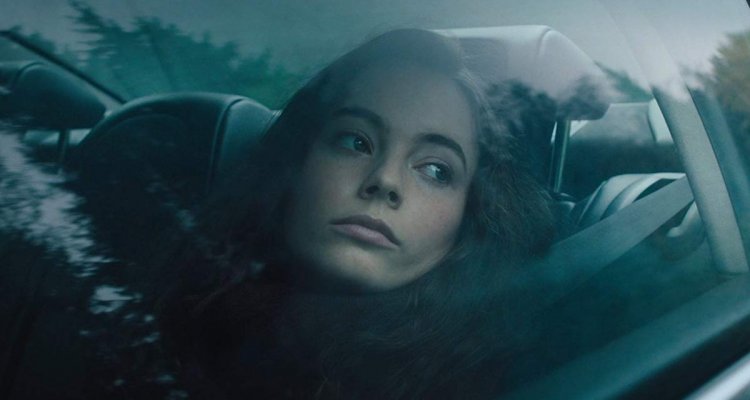A man waltzes down the stairs of his estate in the middle of the night. His hands are as cold as the stones that layer the walls, and his candle can’t warm him, let alone light up the room. He continues walking nonetheless. Through cobwebs and empty rooms, the mysterious figure makes his way past the chilling kitchen into the cold of the night. What is he doing up at such an ungodly hour? Lighting himself on fire as it turns out. He drenches himself in gasoline, lights a match, and goes up in flames, all as we watch in first-person. The movie itself may never catch fire, but Andrew Desmond’s incendiary take on the Gothic subgenre is as mystical and melodic as a Schubert sonata.
“The Sonata” takes its title from a musical composition written for a specific soloist. Here, that specific person is Rose Fisher (Freya Tingley in a breakout role). She’s a successful violinist whose father, Richard Marlow (the late Rutger Hauer), has just committed suicide. “I didn’t even know he was alive,” she replies to the news. That’s because Marlow was both the bad boy of French composers and a bad father who left Rose as a child. It comes as a shock that he would leave Rose his chateau in France, as well as the rights to his work, which includes a score of unfinished pieces. Among those pieces is a sonata that may or may not have the power to bring the Antichrist to life.
Aware of his father’s life or not, Rose doesn’t look surprised by the news. This is because Desmond has failed to make her a relatable character. She’s too spoiled to be likable and too cocky to be believable. When her lifelong agent, Charles (Simon Abkarian), gives her advice, Rose threatens to leave him for a more accomplished studio. And whenever things go wrong, she pouts like a teenager who has just been grounded for the weekend. Maybe a trip to her new haunted house will scare her straight?
The movie’s first and second movements hit all the right notes. You don’t have to be a horror fan to admire the musical pace and location shooting. Shot in France at a building that recalls an insane asylum – it is a little hard to imagine someone wanting to live here – audiences will find it easy to lose themselves in a world of secret basements, cloaked mysteries, and misty woods. Here ghosts and jagged trees hide just out of sight. Also hidden is Marlow’s finished sonata. Most of the plot follows Rose and Charles as they look for clues on how to decipher the rest of the piece.
For much of the film, we are putty in the hands of Desmond. He pulls us in every direction, never tipping his hand to the picture’s final structure. One memorable scene sees Rose wandering through the woods. When she stumbles upon a creepy building, she does what every horror character must do and heads inside. It’s there she finds Marlow’s grand plan, and the audience discovers Desmond’s gift: a knack for suspense and an ability to hold shots long enough to keep the viewer on edge, leaning in with anticipation.
While “The Sonata” has no shortage of gripping moments, it’s still missing the weirdness and stylishness that made the similarly themed “Rosemary’s Baby” or “The Frantic” classics. What made Roman Polanksi a master was his ability to show and tell. Too often, directors waste entire scenes watching their characters talk about satanic mumbo jumbo instead of letting the audience discover the entities for themselves. For every well-timed scare, Desmond has a scene where Rose and Charles discuss “diabolus in musica,” the method of playing music so well that demons have to come out to hear it for themselves. The harmony of direction, performance, and music hint at a bright future for Desmond. He just needs to pair down the talking for a little more “cappella.” [B]

